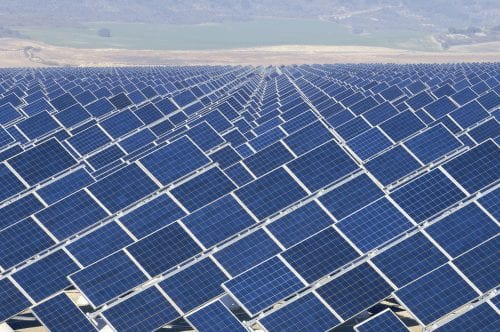
In many markets, PV is already at grid parity. So why aren’t we seeing greater adoption? What is holding the PV industry at bay? Since the energy generation of a PV system does not match the typical homeowner’s energy usage, the industry relies on rate structures to deal with energy produced, but not consumed.
However, the Australian PV market is evolving past incentive structures and towards self-consumption to further energy independence. System owners can put the control of their energy usage into their own hands with behind-the-meter technology, such as smart inverters and low-cost storage.
There are a number of ways that behind-the-meter functionality allows system owners to increase self-consumption and gain energy independence. Adding a battery to a PV system is one of the best ways to increase the amount of self-consumption. While of course the quality of the actual battery is important, it is the inverter that is responsible for its functionality.
For instance, you can buy a top-of-the-line guitar, but if you don’t have a talented musician to play it, then it simply becomes decoration. In a PV plus storage system, the smart inverter controls when the PV is utilised, stored in a battery or transferred to the grid; and controls when the battery is charged, idle, or discharged to generate the maximum economic return.
Depending upon the rate structure, the inverter will decide whether to feed energy to the grid or to store it for later use. For example, SolarEdge’s StorEdge™ solution is programmed to discharge the battery in an optimal manner to meet its programmed goal, such as electric bill reduction, TOU gain, or maximizing self-consumption. Newer, more complex rate structures reward system owners who can intelligently store PV energy for daily on grid applications.
While backup power is not central to behind-the-meter functionality, batteries can offer superior convenience when the grid is down. Natural disasters and grid instability can cause power outages that have severe consequences, such as floods, dark nights, spoiled food, no electric heat, no means to charge mobile communication devices, and more. After the 2010-2011 Brisbane floods, the Queensland utilities was able to restore power to most homes 5 weeks after peak outage. During such scenarios, backup power can be supplied day or night by a combination of PV and battery to enable families to receive basic needs until full power is restored. In this type of scenario, PV power can both supply the house with energy and charge the battery, so that the battery can supply energy to backed up loads during the night.
Another key component needed in a behind-the-meter system, is the meter itself. The meter is responsible for monitoring import and export of energy to the grid and load consumption. Based on these readings, the inverter manages PV production and the battery charge/discharge. Without the meter, the inverter does not know if it is pushing energy to the grid or just to the home. Installing a meter also gives the homeowner insight into self-consumption patterns, as the information can be displayed in the SolarEdge monitoring platform. It is important to note that for backup functionality, a meter is not needed.
Even without a battery, system owners can offset the impact of rate design and increase their self-consumption. One of the simplest ways for system owners to self-consume more is through load management – shifting consumption patterns to match peak PV production to loads such as water heaters, air conditioners, and pool pumps. System owners can take control of their energy usage via load control solutions that direct PV energy to appliances when home demand is low or rates are low. Smart inverters now offer load management control that can be coordinated with a homeowner’s PV production.
As much as system owners benefit from behind-the-meter functionality, if the utility is open to working with the PV industry, then there are additional value streams that can be created. The first and most apparent benefit is grid stabilisation. Voltage regulation, frequency control, and power supply/reservoirs are all possible value streams. For example, by creating distributed PV “power stations” coupled with storage, load can be reduced from the grid at peak times, similar to how having solar in South Australia shifted the peak during heat waves in February 2014. This lessens the need for utility investments in generation, transmission, and distribution.
While traditional power generation is built on large single sources for energy production and storage, future power generation may look much different. This is where behind-the-meter functionality plays a role and distributed generation can become a reality. New technologies enable a decentralized model with mini-power stations and offer more value by placing energy production and storage at the same location as the load. Coupled with advances in communication infrastructure, inverter controls, computing power, and smart inverter technology, there are many additional opportunities for behind-the-meter generation and storage. These technologies could finally be the missing link of technology that unlocks solar energy’s grid parity potential.








